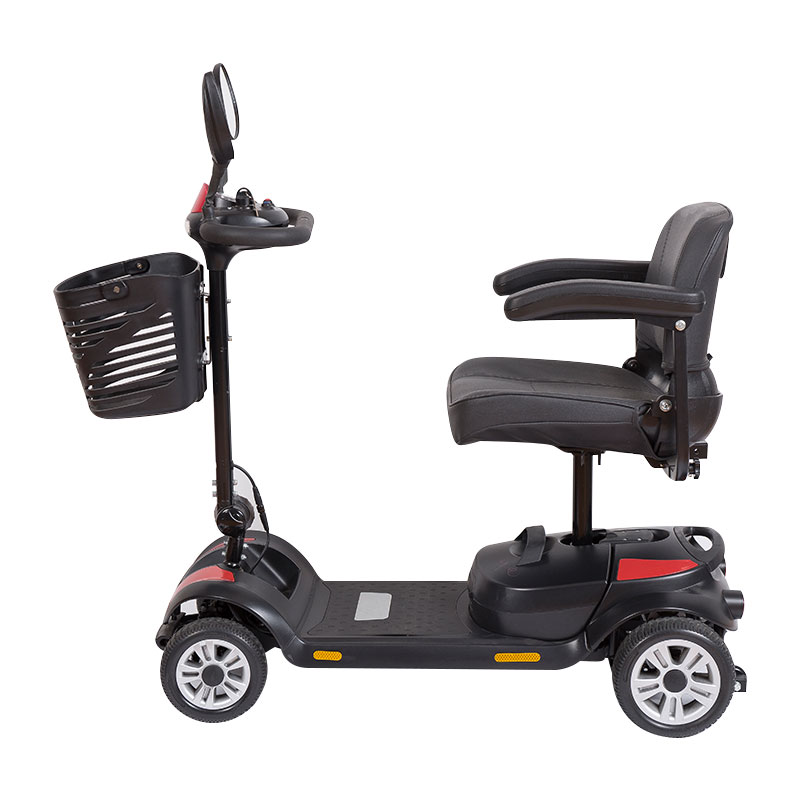How is the design of the 4 Wheels Elderly Mobility Scooter helping the elderly, especially those with limited mobility, to get on and off the vehicle easily?
The design of the 4 Wheels Elderly Mobility Scooter is specifically engineered to address the needs of elderly individuals, especially those with limited mobility, ensuring a safe and easy process for getting on and off the vehicle. Several design features contribute to facilitating this transition:
Low Step-In Height:
The scooter is designed with a low step-in height, allowing elderly users to easily step onto the scooter without needing to lift their legs too high. This feature minimizes the effort required for individuals with limited mobility to board the scooter.
Swivel Seat Option:
Some models may incorporate a swivel seat option, enabling the seat to rotate to the side. This facilitates a more convenient sideways entry onto the scooter, eliminating the need for users to make complex turns while boarding.
Wide and Open Platform:
The platform where the user stands or sits is designed to be wide and open, providing ample space for users to position themselves comfortably. This design feature accommodates individuals with mobility aids or those who require additional space for stability.

Stable and Non-Slip Flooring:
The flooring of the scooter is designed to be stable and non-slip. This reduces the risk of slips or falls during the boarding process, ensuring that users feel secure and confident while stepping onto the scooter.
Integrated Grab Bars or Handles:
Grab bars or handles are strategically integrated into the design, providing support for users as they navigate the boarding process. These handles offer stability and can be used for balance during entry and exit.
User-Friendly Controls Within Reach:
The controls for operating the scooter are positioned within easy reach of the user, allowing them to access and operate the scooter without requiring extensive physical effort. This user-friendly design minimizes strain during the boarding and riding process.
Adjustable Armrests:
Armrests are designed to be adjustable, allowing users to customize their height and position. This feature facilitates easier boarding by providing additional support for users to hold onto as they transition onto the scooter.
Assistance Bars for Caregivers:
Some models may include assistance bars or handles for caregivers. These bars are strategically positioned to assist caregivers in guiding or supporting the user during the boarding process, enhancing overall safety.
Automatic or Manual Tilt Options:
Certain scooters may have a tilting mechanism, either automatic or manual, that lowers the scooter to the ground for easier boarding. This feature eliminates the need for users to step up onto an elevated platform, simplifying the entry process.
Visual and Audible Indicators:
Visual and audible indicators may be incorporated into the design to provide guidance during the boarding process. These indicators alert users when the scooter is at a suitable height for boarding or if any safety measures need attention.


 English
English Deutsch
Deutsch







-3.jpg?imageView2/2/format/jp2)
.jpg?imageView2/2/format/jp2)






